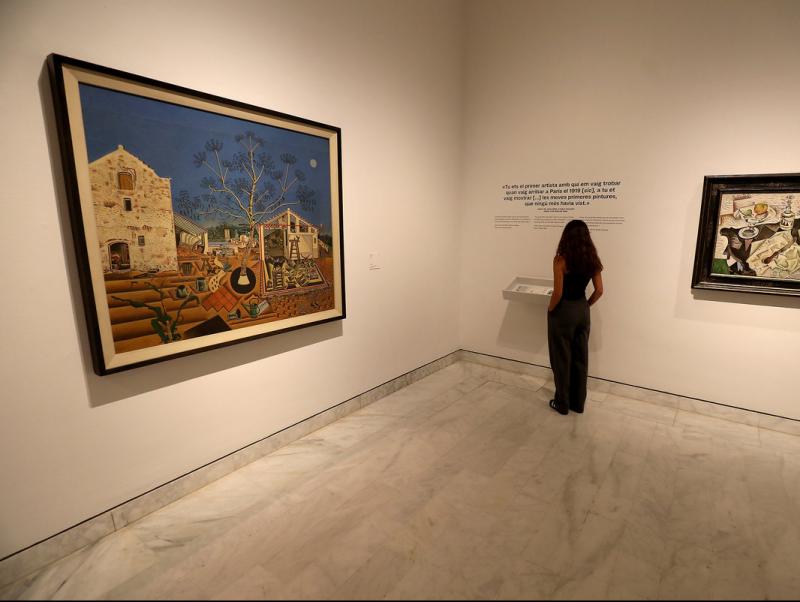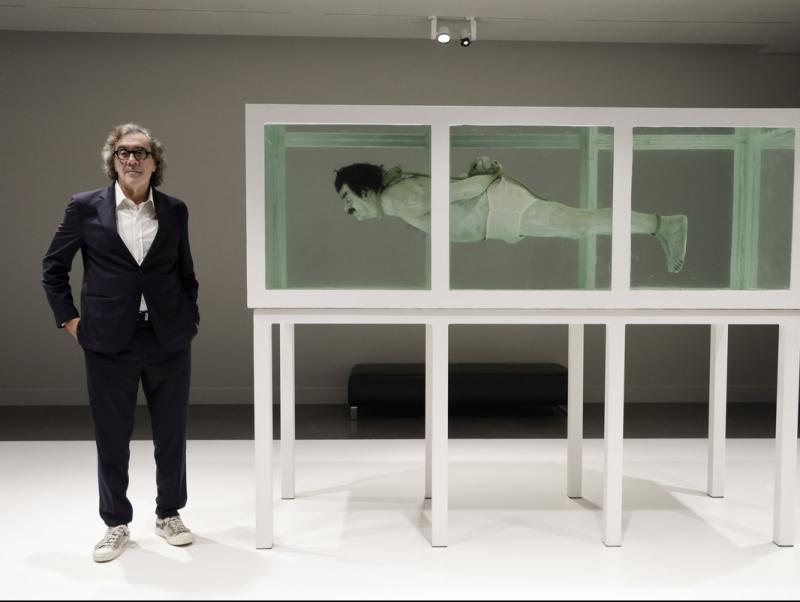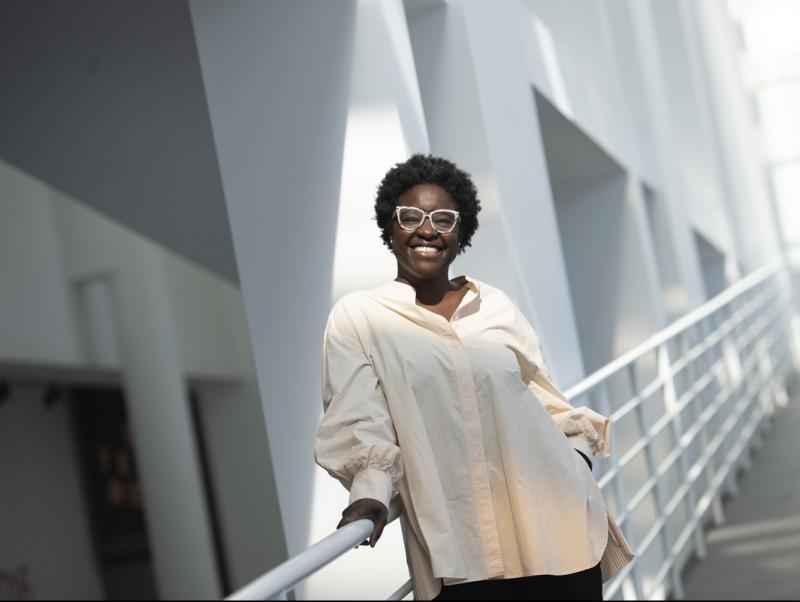AI: opportunity or danger?
An exhibition at the CCCB invites visitors to learn about the history, challenges and risks of this fast-growing technology
Will artificial intelligence (AI) take away our jobs? Will it put an end to art as we know it? Is it racist? Or conscious? Will it rebel against humans and wipe us out? The emergence of AI using generative tools such as ChatGPT has raised a series of issues that are difficult for the average person to understand. What might help is a visit to the exhibition, AI: Artificial Intelligence, which can be seen at Barcelona’s Centre of Contemporary Culture, or CCCB, until March 17 next year.
The exhibition has been co-produced with the Barcelona Supercomputing Center (BSC) based on a dialogue between scientists, thinkers and artists for a 2019 exhibition organised by the Barbican Centre in London. However, despite that not being so very long ago, an update was needed, and this has included the incorporation of a notable set of artistic pieces and installations, five of which were specially created by local artists, and complement the informative aspect that permeates the entire itinerary. The exhibition explores the history, operation, creative possibilities and ethical and legislative challenges of this technology that is now on everyone’s lips.
“It’s becoming common that, when faced with each great technical or scientific development in history, the debate is divided between apocalyptic and integrated, according to the model established by Umberto Eco. It happened with the printing press, the train, the radio and the Internet. Each technological discovery opens up a multitude of unknown worlds that generate as much fear as hope and as many doubts as fascination. And with AI it has been no different,” argues CCCB director, Judit Carrera, in justifying the need for such an exhibition.
In keeping with the desire to put into context what artifical intelligence represents, how it is developed and what role it can play in today’s society, the exhibition invites visitors to take in a textual, visual, olfactory and tactile experience – a multisensory experience, in short – that allows the visitor to relate to artificial intelligence in various ways. “One of the beauties of the exhibition is that it is the result of bringing together very different profiles. The first meetings between scientists, technologists and thinkers were a lot of fun. We’re very lucky, because in very few cities around the world will you find the confluence of a computing centre and a centre for reflection and thought as powerful as the ones we have in Barcelona,” says BSC deputy director, Josep Maria Martorell.
In his opinion, the fundamental differences between AI: Artificial Intelligence and previous exhibitions at the CCCB related to science, such as those on Mars, the brain or quantum physics, lie in the speed at which the object of study appeared and its inherent characteristics. “AI may not be design neutral. It can have biases that science is not used to. And, in addition, it is the first time that we have talked about a technological object that is not physical and thereby incorporating different challenges. To study it from different points of view is more important than ever,” he adds.
Skin tones
This lack of neutrality and prejudices against people of colour, women and the old are evidenced, for example, in Carmen Puche Moré’s AI-generated art video, My word, although this is not the only piece that suspects that behind the supposedly intelligent algorithms lies the gaze of a relatively young Caucasian man.
Before arriving at this piece, visitors can take an extensive tour to discover, for example, the fuel that powers the AI machinery: data. Everything that surrounds us, words, images and sounds, are translated into numbers and numerical operations. AI perceives the world as a data set, and without big data and the machinery that manages them, it would never have been possible. This large volume of data that allows algorithms to relate to us in an increasingly more fluid way arises from each of our operations with connected digital media, starting with mobile phones.
“Is AI racist? Yes, but it’s because it’s our magnified reflection. The criteria and biases in the use that humans make of technology and those implicit in the operation of digital media are the origin of the criteria and biases that AI highlights. The question now is how do we build a new model that leaves this view behind,” explains the exhibition’s curator, Lluís Nacenta.
Jordi Torres, BSC researcher and scientific advisor to the exhibition, points out that supercomputing has been decisive in achieving current advances in AI and, given the imminent legal regulation, calls for citizen empowerment in this field, starting with a visit to this exhibition and the workshops and debates that complement it.
Exhibitions Technology
How to compute the incalculable
To say that technology is advancing at breakneck speed is not a cliché or an exaggeration but it may not be fully effective in divulging the magnitude of this change. Perhaps a better example would be to consider that MareNostrum 1, the Barcelona Supercomputing Center’s first supercomputer, was installed in a space of 160m² in 2005, and was the fourth fastest computer in the world. But all that computing power can now be concentrated, and even doubled, with a single chip of only 8cm². And MareNostrum 5, when it is inaugurated next month, will have 4,480 chips like this only in the part of the machine designed to advance artificial intelligence models.
The arrival of MareNostrum 5 has taken much longer than expected ( it was initially due for April 2021), but now processes have now begun so that European researchers can access it in a few weeks. This summer, the last components of the machine were assembled and BSC technicians and researchers are now carrying out operational tests before this first-class scientific facility can be opened to the research community, something that will coincide with the exhibition at the CCCB. When launched, MareNostrum 5 will be one of the most powerful supercomputers in the world, capable of performing 314,000 billion operations per second. “It will increase and accelerate the capacity to do research with artificial intelligence, allowing new scientific advances that will help solve global challenges such as climate change and the advancement of precision medicine,” says the project’s management team.
MareNostrum 5 has been built with a technology that did not exist until now that will make it the most powerful computer in Spain and the third fastest on the continent. However, BSC officials do not feel pressured by the rankings. They could have made it even faster, but they preferred it to be more versatile and better suited to different kinds of research. In addition to AI research, it will also be a key piece in creating digital twins of the human body and advancing towards personalised medicine and new drug design.
MareNostrum 5 should have a useful life of five or six years of scientific production before it is replaced.








